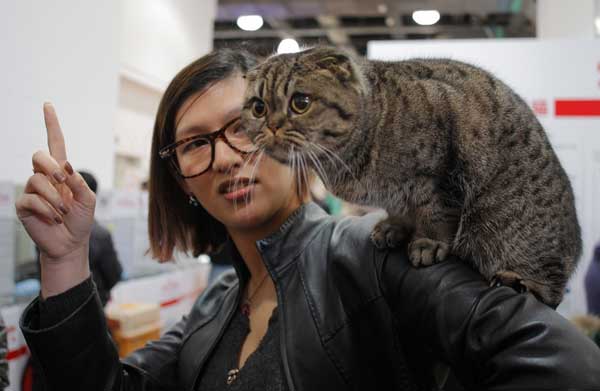| Palace cats forbid rats living in museum |
|
 |
| Cats were friends of Chinese since ancient times |
For years, the cat has roamed the empty lanes of the former royal palace after it has closed its doors to visitors, in search of his archenemy: mice.
Before being taken in by Shan Jixiang, curator of the Forbidden City, also called the Palace Museum, the animal lived a brutish life, foraging food from dustbins and howling during the night. According to Ma Guoqing, director of the sanitation department of the Palace Museum, some 200 cats, including Ping'an, whose name can be literally translated to "safety" in Chinese, have in recent years found a home in the Forbidden City.
"Some of them may even be the descendants of royal pets of the past, while the rest are stray cats taken in by the museum staff," said Ma.
As a result, a policy originally aimed at bringing down the population growth of stray cats in the Forbidden City has also generated unexpected results by scaring away rats from the cultural relics.
Cats have long lived in the Forbidden City, which dates back more than 600 years. They were kept as royal pets in the past, playing with the emperor and his relatives.
Now the little creatures have outlived their masters.
Though there are no official records on the current number of stray cats in Beijing, a Capital Animal Welfare Association (CAWA) report in 2010 put the number at around 200,000.
According to the report, one female cat can have as many as three or four litters a year, ultimately adding another 100 cats to the stray population in its lifetime.
Stray cats have always been a headache for China's city authorities, who often receive complaints from residents about the animals' unpleasant smell and night howling.
For the archaeological conservators of the Forbidden City, the rapid surge in the number of cats has also brought a challenge in how to treat the kitties humanely while maintaining a clean and favorable environment.
Ma Guoqing told Xinhua the museum started to realize the seriousness of the problem in 2009, when stray cats in large numbers were often seen skulking through the yard and on the walls. "The presence of cats could pose a threat to visitors, and their excrement is definitely an eyesore," said Ma.
A special program began in 2009 to take care of the cats.
The program follows the trap-neuter-return principle, or TNR, a method of humanely trapping unaltered stray cats, spaying or neutering them, and returning them to the location where they were collected, according to Gao Haiying, a Beijing-based animal protection organization staff member in charge of the museum's program.
Gao said that Chinese pet keepers never had a tradition of neutering their pets as they think it is better for the animals, but the resulting births have led to higher numbers of abandoned pets.
In a densely populated city like Beijing, the capital of China, the control of stray cats has become a controversial issue as people have debated whether neutering and euthanasia are effective and humane methods to curb the stray cat numbers.
Ma said 181 cats in the Forbidden City were neutered in the past five years and the number of stray cats is now steady, adding that every neutered cat has been marked to tell it apart from the others.
Ma even has a ledger in which he has recorded all "personal information" about the cats: names, pregnancy status, neutering operation type and the amount of money spent on the operation. "From 2009 to 2013, the program cost 18,410 yuan (3,023 U.S. dollars) in total, a small amount compared with the whole sanitation work budget," said Ma.
The museum's money has not been spent for naught. Though rarely seen by the visitors, the cats have played an important role in safeguarding the integrity of the precious antiques.
"They are a powerful deterrent to museum rats and we have not found a single piece of cultural relics damaged by cat claws," said Ma.
|
|
|
|
|
|
|
|